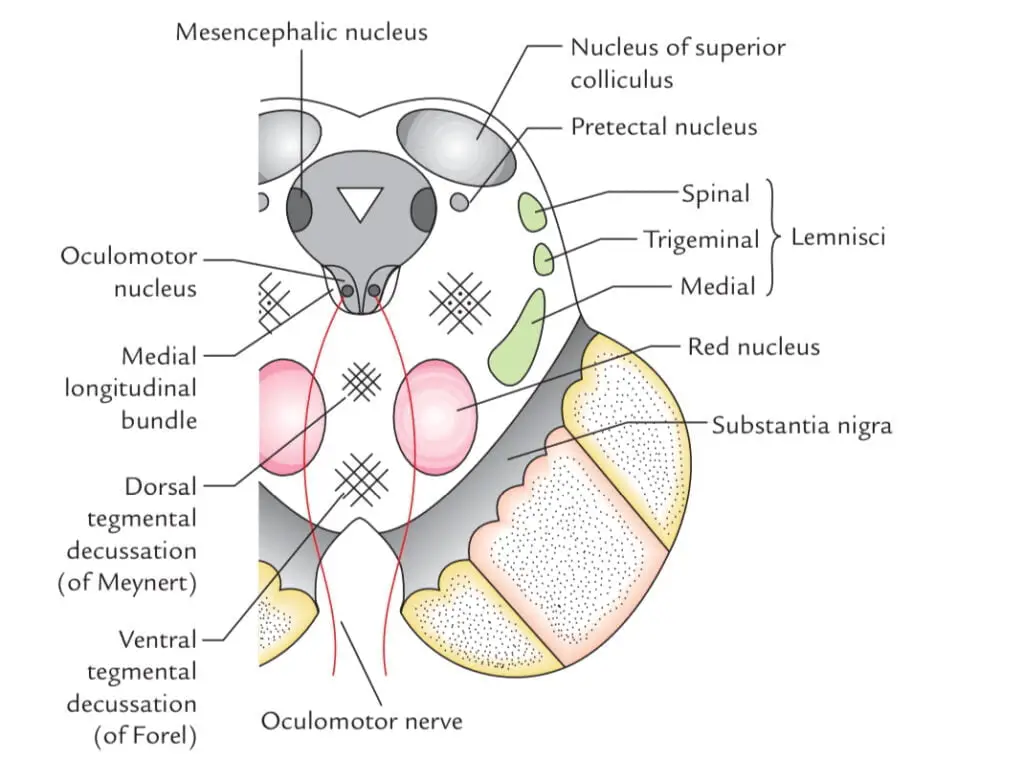Ever wonder what part of your brain makes you freeze when you see something frightening? Or what makes your heart race when you’re stressed or excited? The periaqueductal gray, or PAG, is one of the brain’s best-kept secrets. This tiny region deep in the midbrain packs a mighty punch when controlling some of your most basic survival instincts and behaviors.
The PAG influences everything from your fight or flight response to pain modulation to social bonding. Despite its small size, the PAG is one of your brain’s most essential control centers. Ready to unlock the mysteries of this powerful yet little-known part of your brain? Keep reading to learn how the PAG drives your autonomic arousal, motivates your behavior, and determines how you respond in emotionally charged situations.
What Is the Periaqueductal Gray?
The periaqueductal gray (PAG) is a small midbrain region that is essential in regulating your body’s functions and behaviours.
What the PAG controls
The PAG controls your autonomic nervous system – like your breathing, heart rate, blood pressure, and body temperature. It also modulates your body’s stress response, activating your fight or flight reaction in dangerous situations.
On the behavioral side, the PAG is connected to your motivation and reward system. It helps drive you to pursue things that are pleasurable or meaningful. The PAG also regulates defensive behaviors – it can elicit an aggressive response to threatening stimuli or activate your innate ‘freeze’ reaction in response to inescapable danger.
How the PAG works
The PAG receives signals from many brain areas that sense the internal and external environment. It then helps coordinate appropriate autonomic, hormonal, and behavioral responses. The PAG comprises clusters of neurons that release neurotransmitters like GABA, glutamate, and enkephalin. By inhibiting or exciting other brain regions, the PAG can produce widespread effects throughout the body and mind.
The PAG’s role is crucial for adapting to your environment’s challenges. This tiny midbrain structure enormously influences your well-being and ability to thrive by controlling your body’s homeostasis and modulating motivated behaviors. Understanding the PAG provides insight into what makes us human.
Ever feel confused about Cerebra Aqueduct?
Anatomy and Location in the Brain
The periaqueductal gray (PAG) is a small region surrounding the aqueduct in the middle of your brainstem. Its location makes it a critical relay center for signals traveling up and down your brain and spinal cord.
Anatomy
The PAG contains clusters of neurons that control essential functions like:
- Pain modulation: The PAG turns the volume up or down on pain signals. It can activate your body’s natural painkillers to relieve discomfort.
- Autonomic control: The PAG helps regulate critical body functions like breathing, blood pressure, heart rate, digestion, and temperature regulation.
- Defense behaviors: The PAG coordinates your fight or flight response to a threat. It activates stress hormones and changes your physiology and behavior to defend yourself or avoid danger.
- Reward and motivation: Parts of the PAG involve reward processing and cause. They drive you to pursue things that are pleasurable or meaningful.
The PAG receives inputs from many areas of emotion, memory, cognition, and the senses. Its outputs influence motor, autonomic, and endocrine responses to let you physically react to whatever is happening in your internal or external environment.
The PAG is a central hub for coordinating your thoughts and feelings with physical reactions. Its diverse roles are critical for well-being, adaptation, and survival. Understanding this mysterious midbrain region provides insight into what makes us human.
The Periaqueductal Gray and Pain Modulation
The periaqueductal gray (PAG) is a small region in your midbrain that plays an essential role in pain modulation and the body’s natural pain relief system.
Endogenous Opioids
The PAG contains opioid receptors that bind endorphins and enkephalins, the body’s natural painkillers. When these endogenous opioids activate the PAG, they inhibit the pain signals ascending from the spinal cord to the brain. This results in an increased pain threshold and a decreased perception of pain.
Descending Pathways
The PAG also sends descending signals down the spinal cord that can facilitate or inhibit the transmission of pain signals from the body. When the PAG is activated, it sends inhibitory signals down the spinal cord that suppress pain transmission at the level of the spinal cord and dorsal root ganglia. This is how the PAG can modulate pain perception and provide natural analgesia.
Stimulation and Pain Relief
Several factors can activate the PAG and trigger its pain-modulating effects, including:
- Exercise: Aerobic exercise causes the release of endorphins that activate the PAG. This is why exercise can provide temporary pain relief.
- Acupuncture: Acupuncture stimulates the PAG by releasing opioids providing analgesia.
- Placebo effect: The belief that you have taken an analgesic, even an inactive substance, can stimulate the PAG to release endorphins and relieve pain.
- Stress and emotions: The PAG also responds to psychological states like stress, fear, and anxiety, which can modulate pain perception.
By understanding the role of the PAG in pain modulation and how to activate this system, we open the door to harnessing the body’s natural ability to relieve pain without using drugs. The mysteries of the PAG demonstrate the power of the mind-body connection.
The Role of the Periaqueductal Gray in the Fight or Flight Response
The periaqueductal gray (PAG) activates your body’s fight or flight response. When you perceive a threat, the PAG triggers a cascade of physiological changes that prepare you to confront the danger or get safely away.
Within the PAG are neurons that connect to your autonomic nervous system and the areas of your brain involved in arousal, emotion, and stress. When these PAG neurons are activated, they send signals to the autonomic nervous system to:
- Increase your heart rate and blood pressure. Your heart starts pumping faster to supply more oxygen to your muscles.
- Release adrenaline and cortisol. These stress hormones give you an energy boost and increase alertness.
- Constrict blood vessels. This raises blood pressure and diverts blood flow away from the areas of your body that are less important for fight or flight, like your digestive system.
- Dilate your pupils. Your pupils widen to let in more light and improve your vision.
- Mobilize glucose and fat stores. Energy sources are released into your bloodstream to fuel your muscles.
- Suppress your appetite. Your body’s resources are diverted from digestion to power your emergency response.
- Slow your digestion. Blood flow is reduced to your gut during fight or flight, slowing the release of stomach acid and digestive enzymes.
- Increase breathing. Your breathing quickens to take in more oxygen and fuel your muscles.
- Activate your muscles. Your body tenses up, preparing to react quickly to the perceived threat.
In this way, the PAG instantly transforms your physiology and motivates you into action when danger arises. After the threat has passed, other parts of your brain work to deactivate the fight or flight response by signaling the PAG and your autonomic nervous system to restore balance. Your body and mind can return to a normal, relaxed state once safety is restored.
Periaqueductal Gray Involvement in Motivated Behaviors
The periaqueductal gray (PAG) is important in controlling motivated behaviors that drive you to pursue rewards and avoid threats. Located in the midbrain, the PAG receives input from several areas involved in emotion, memory, and reward processing. It then sends signals to brain parts that control movement, arousal, and stress responses.
Reward-Seeking Behavior
The PAG is involved in activating behavior aimed at obtaining rewards. When you see, smell, or think about something pleasant, like your favorite food or an enjoyable activity, the PAG stimulates the release of dopamine in the brain’s reward circuit. This makes you feel good and motivates you to pursue that reward. The PAG also activates motor areas in the brain and spinal cord that get you moving to go after the reward.
Avoiding Threats
The PAG equally helps drive behaviors to avoid undesirable outcomes. Upon sensing a potential threat, the PAG triggers the release of stress hormones like cortisol that make you feel anxious and put you on alert. It also stimulates areas involved in fear and escape behaviors. This mobilizes you to escape the threatening situation as quickly as possible.
Overall, the PAG acts as an important interface between your emotions, memories, and environment and your brain and body systems that control how you behave and respond. By influencing both the rewarding and threatening aspects of motivation, the PAG helps ensure your safety and well-being so you can pursue pleasant things and avoid those that are not.
Diseases and Disorders Related to Dysfunction of the Periaqueductal Gray
The periaqueductal gray (PAG) is essential in regulating pain perception and modulation in the body and brain. When this area experiences damage or dysfunction, it can lead to pain signaling and processing disorders.
Chronic Pain Syndromes
Chronic pain conditions like fibromyalgia, trigeminal neuralgia, and temporomandibular joint disorder (TMJ) may be linked to irregular activity in the PAG. This region helps inhibit pain signals in the body and brain, so impairment can lead to increased sensitivity to pain or an inability to properly modulate pain. Treatments targeting the PAG, such as transcranial magnetic stimulation, may help relieve symptoms for some people with these chronic pain disorders.
Migraine
The PAG regulates autonomic functions like blood flow, respiration, and arousal. Abnormal activity in the PAG may play a role in developing migraine headaches, specifically related to dysfunction in the trigeminovascular system, which supplies sensation to the head and face. Treatments that influence the PAG, such as occipital nerve stimulation, have shown promise for reducing migraine frequency and severity in some patients.
Anxiety and PTSD
The PAG also mediates behavioral and emotional responses to threatening stimuli. Irregular activation of the PAG may contribute to anxiety disorders and post-traumatic stress disorder (PTSD). Exposure therapy and medications targeting this brain region, such as serotonin reuptake inhibitors, are often used to help alleviate anxiety and PTSD symptoms.
Dysfunction in the periaqueductal gray can manifest in several ways. It may underlie or influence various pain, behavioral, and emotional disorders. A better understanding of this critical brain region can help inform new treatments and improve the quality of life for people suffering from these health conditions. Continued research on the PAG will unlock its mysteries and open doors to more targeted therapies.
Conclusion
So there you have it, an introduction to one of your brain’s most fascinating and vital parts. The periaqueductal gray involves many essential functions, from controlling your heart rate and blood pressure to mediating your responses to pain and stress.
This small but mighty part of your brain is working behind the scenes every moment of every day to keep you alive and help ensure your survival. While scientists still have much to learn about all the periaqueductal gray’s roles and responsibilities, continued research into this crucial brain region will provide key insights into what makes us human. The next time your heart races or you feel a rush of fear, you’ll know the periaqueductal gray is hard at work.




